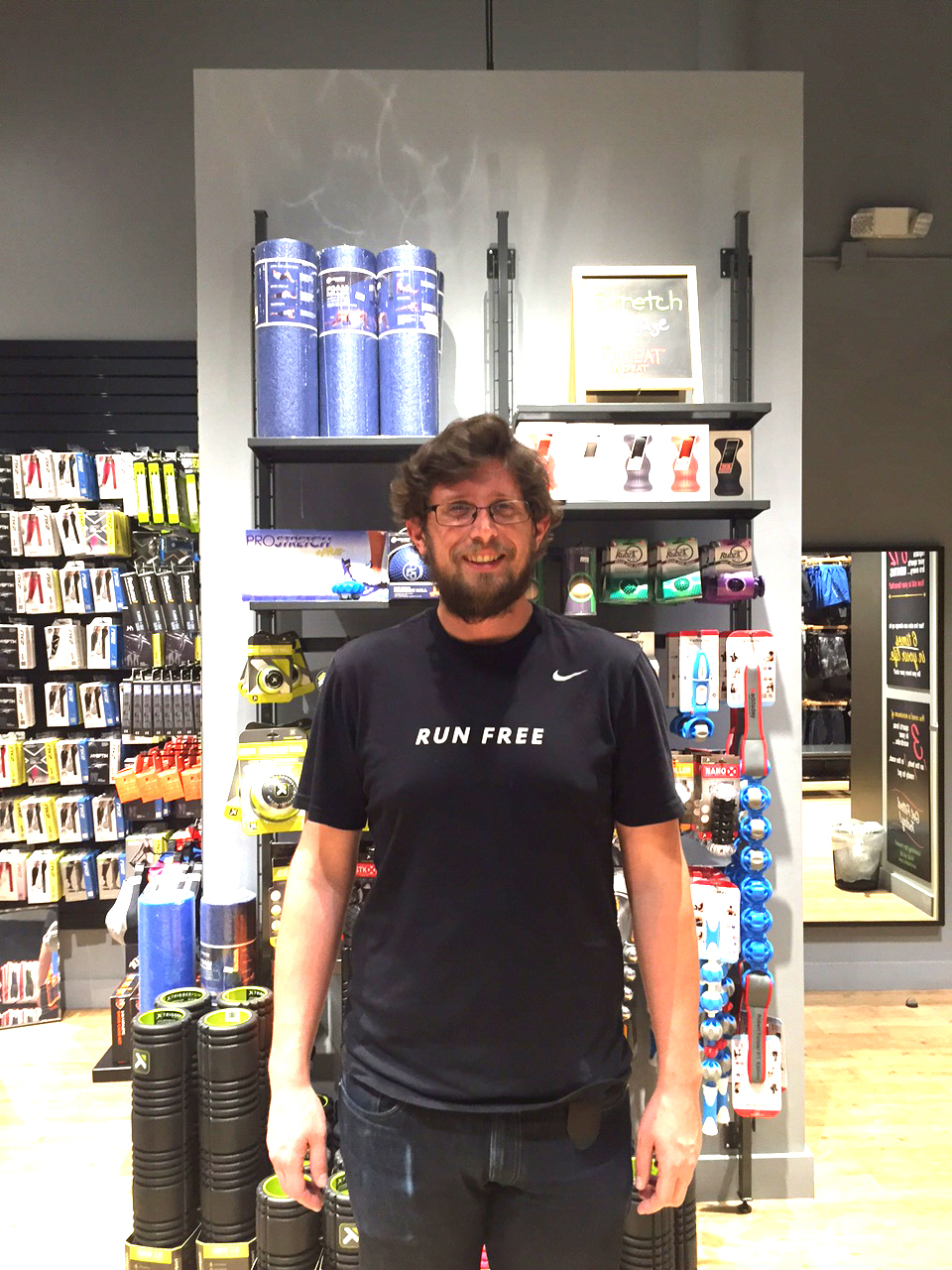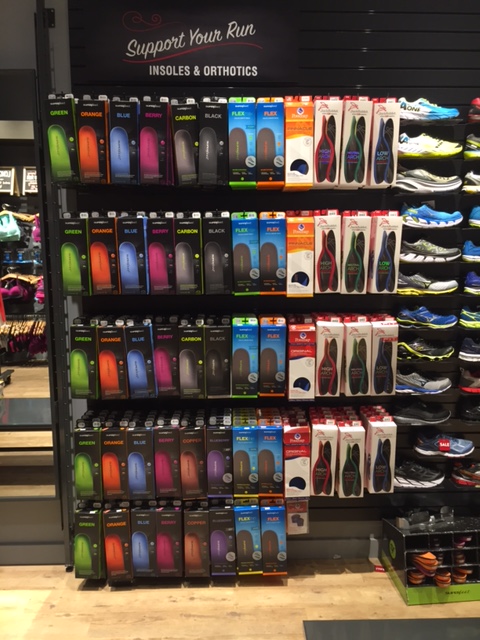JackRabbit opens its toolbox to share how specialty run retailers can successfully sell insoles.
By Jahla Seppanen
In terms of running specialty, there are two sides of the coin. Either you sell insoles or you don’t.
Much of the distinction comes down to whether staff is educated enough to speak to different insole types and their benefits. However, for such a small accessory should specialty run retailers make space and time for them?
Oh yes, they should.
SGB sat down with Alex Ranton, store manager at JackRabbit Union Square in NYC (and bonafide insole guru) to talk about why insoles are vital to the biz.
“Insoles are the first way to create a more dynamic and customized fit for the customer coming in for a pair of running shoes,” said Ranton, who asked us to think about the way a shoe is built — a flat surface that is lower in the forefoot and higher in the heel. “You essentially want to put something in the middle to add contour,” he said.
When Ranton goes about training the JackRabbit staff, he trains them to talk about benefits. “An insole is going to increase shock absorption, which betters the body’s overall alignment, putting you more upright, and makes you more efficient depending on where the heel cup is seated.” Trick of the trade: ask your employee to demonstrate the thinness of a regular shoe insole by taking it out for them to feel how flimsy the inset is. According to Ranton, this approach demonstrates to the consumer that the provided insole is really just a means to protect the foot from the shoe stitching. But adding a rigid heel cup is going to make their foot land more naturally. Ranton uses the analogy of running on sand. “What’s easier to run on, hard sand or soft? Most customers come in thinking the softer the shoe the easier the run but it’s actually the opposite. Softer doesn’t lead to more support. In fact, it has the opposite effect.”

Compared to the cycling industry, where there is a consumer expectation to purchase a custom insole, running still has some catching up to do. Ranton attested that most newbie runners walk into the store without thinking of insoles, and that’s where employees have the biggest opportunity.
Ranton comes from a background of smaller specialty running shops that never used to sell insoles. Not because they didn’t want to, he said, “it’s simply a matter of knowledge.” Now Ranton heads the bustling Union Square location for JackRabbit — a specialty run chain previously known as the Running Specialty Group and an operating segment of The Finish Line, Inc.
“Having that conversation about the shape of the shoe is a big shift in terms of retail selling philosophy, and we’ve taken the position that you’re going to see a lot more added benefit,” Ranton told SGB. “Right now, and moving forward, custom fit is a big deal. It personalizes the experience.” Ranton also stresses the perks of using insoles as a way to make the consumer feel more catered to. “If someone comes in looking for a shoe, you have the opportunity to show them an insole.”
But the how is just as important. Presenting an insole in the shoe-buying experience is a dialed science that Ranton has refined for his employees.
One approach he uses to educating staff is by collaborating with vendors (like Superfeet, one of the largest names in their insole business, Powerstep and Spenco) to host clinics. These clinics, or education sessions, help employees deeply understand the product, while Ranton steps in giving tips on how to bring up the topic.
Take for instance, customer Jane Doe. She comes in looking for a pair of shoes, and you want to include insoles in her purchase. A bad example of what to do would be to let Jane sit down, try on shoes and then at the end say, “how about insoles?”
“This doesn’t send the right message to the consumer,” said Ranton, who suggested instead to make insoles a part of the staff/customer conversation from the beginning. “Don’t make it just about the shoe. It’s a knowledge-finding experience. Jane should come in and learn about added benefits — after all, when people come in we’re trying to do preventative things to maximize experience and lessen the chance of injury,” Ranton continued.

The second approach JackRabbit Union Square uses to promote insoles is headed by Accessory Buyer Samantha Kerr, providing a three-part system to ensure the right kind of insoles are available on the floor, and those insoles are positioned in a buyer-friendly way.
“A big part of the insole and assortment business is replenishment based,” she said. “We can foresee demand where we have historically seen sales by volume and profile. Before launching something new, we have a conversation with well educated staff and ask, ‘does it fill a gap?’”
Thus far, the store has seen the most success in selling regional performance-based brands, as some regions tend to be stronger in one brand or another, which boils down, again, to which insoles the staff is educated in and comfortable selling. Kerr’s trick of the trade: level the sales distribution between other brands by asking them to come out to the store for clinics. “Brands are very happy to do this,” she added.
Another variant that must be taken into account in selling insoles is the space layout of the retail location. “In terms of merchandising, we’ve rolled out an ‘Insole Destination’,” said Kerr, who remembers seeing some specialty shops line up their insoles at the bottom of the footwear wall (a big no-no), or in places that feel like an afterthought. To helping staff include insoles from square one, their presentation should mirror the conversation, which means changing the layout to help give a visual to different product pairings and stories.
JackRabbit Union Square recently put its insole pedagogy to the test, launching the new Superfeet Flex series. “These are marketed at a lower price point,” Kerr said, “but we know they won’t be successful unless our staff feels comfortable making recommendations.”











